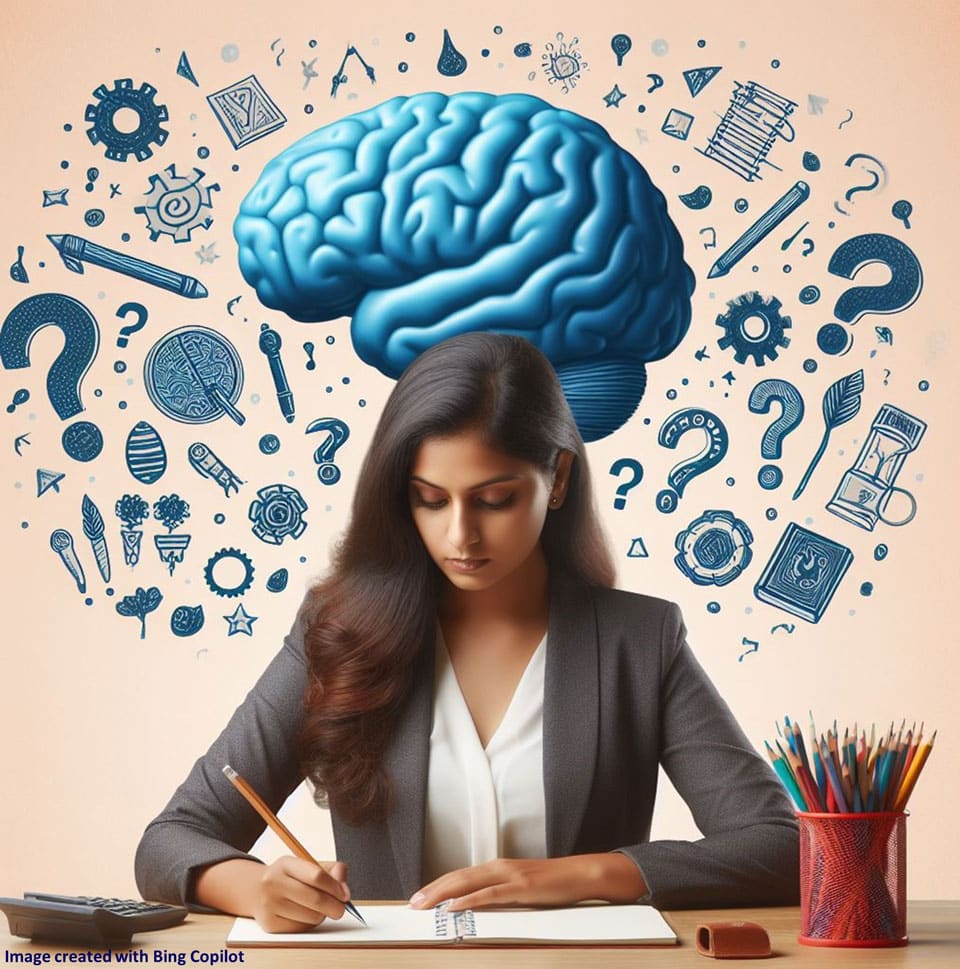Thumbs and Thoughts: Embracing the Opposable Mind in the World of Generative AI

“The test of a first-rate intelligence is the ability to hold two opposed ideas in mind at the same time and still retain the ability to function.” —F. Scott Fitzgerald
The Merriam-Webster dictionary defines opposable as:
- Capable of being opposed or resisted
- Capable of being placed against one or more of the remaining digits of a hand or foot
The evolution of opposable thumbs is a critical milestone in human evolution. Primates developed grasping opposable thumbs to adapt to living on trees and branches. The American Museum of Natural History says,
“The human opposable thumb is longer, compared to finger length, than any other primate thumb. This long thumb and its ability to easily touch the other fingers allow humans to firmly grasp and manipulate objects of many different shapes. The human hand can grip with strength and with fine control, so it can throw a baseball or sign a name on the dotted line.”
Imagine where we would be if we didn’t have opposable thumbs. We wouldn’t be able to handle tools, perform hand operations that require precision, grasp objects, or handle our smartphones!
The term “opposable mind” was coined by Roger Martin, former Dean of the Rotman School of Management at the University of Toronto and author of several business books, in his book on integrative thinking. He was looking for a metaphor to talk about the thinking brilliant minds use in business. He writes,
“We were born with an opposable mind we can use to hold two conflicting ideas in constructive tension. We can use that tension to think our way through to a new and superior idea. Were we able to hold only one thought or idea in our heads at a time, we wouldn’t have access to the insights that the opposable mind can produce. And just as we can develop and refine the skill with which we employ our opposable thumbs to perform tasks that once seemed impossible, I’m convinced we can also, with patient practice, develop the ability to use our opposable minds to unlock solutions to problems that seem to resist every effort to solve them.”
Just as opposable thumbs make grasping objects possible, opposable minds can grasp complex situations to solve problems we encounter today.
Opposable Mind in The Age of Generative AI
Today, more than ever, we need the power of opposable mind.
When I think about Generative Artificial Intelligence (GenAI), I comprehend that it can bring a lot of benefits:
- Improved creativity and innovation: GenAI can create new ideas and innovations based on the data it has been trained on.
- Productivity and efficiency enhancement: It can automate tasks that humans would otherwise do, freeing up time and resources for other activities, resulting in improved productivity in the workplace and personal lives and efficient processes.
- Personalization and customization: GenAI can be used to personalize and customize each customer’s products and services, increasing customer satisfaction and loyalty.
- Reduced costs: It can help businesses reduce costs by automating tasks, improving efficiency, and personalizing products and services.
- Improved decision-making: Businesses make decisions about the future based on forecasts. GenAI can provide better predictions because of the vast amount of data it can handle and make sense of.
- New opportunities: Many potential opportunities for businesses to use it in new and innovative ways. For example, generative AI can be used in healthcare to develop new drugs, diagnose diseases, and personalize treatment plans.
I also recognize the dangers of GenAI:
- Bias: GenAI models produce output based on the data they are trained on. When it is trained on biased data, the results will likely be biased.
- Privacy & Security: Using GenAI, one can generate fake content, such as deepfakes, which can be used to deceive people or to spread misinformation.
- Ethical Concerns: Use of data without giving credit to the sources leads to usage that is not ethical; explosion of misinformation
- Cost: Today, GenAI models are expensive to train and deploy. Only a few enterprises can afford it, which means small and medium businesses get left out of the opportunity.
- Data Availability: GenAI models require high-quality training data. The results can be unreliable if the data is incomplete, inaccurate, or outdated.
- Explainability: It is difficult to explain how GenAI models work, making it difficult to trust their results.
To illustrate the opposable mind when thinking about GenAI, I use a GenAI tool to create an illustration for an article I am writing, such as this one. It involves describing what I desire as prompts, and the GenAI tool provides one within a few seconds. While doing that, I am also highly aware that every such request to a GenAI tool may be affecting energy consumption and the planet. The MIT Technology Review article “Making an image with generative AI uses as much energy as charging your phone,” published in December 2023, says, “Generating images was by far the most energy- and carbon-intensive AI-based task.
Generating 1,000 images with a powerful AI model, such as Stable Diffusion XL, is responsible for roughly as much carbon dioxide as driving the equivalent of 4.1 miles in an average gasoline-powered car.”
With that in mind, I try to use image creation with GenAI sparingly.
Today, we see a strong division between the proponents of GenAI and the opponents. We need to get away from being monomaniacs and find a solution using our opposable minds by comprehending these pros and cons when making decisions regarding the speed of adoption and areas of implementation, and consider multiple goals such as empowering the workforce and augmenting their skills, instead of purely cutting costs.
Harnessing The Power of Opposable Mind
“I believe that integrative thinking is a “habit of thought” that all of us can consciously develop to arrive at solutions that would otherwise not be evident.” —Roger Martin
I hope all the leaders involved in the decision-making regarding Generative AI would seriously study Martin’s integrative thinking approach to solving complex problems and apply the four steps he advocates in the 2007 Harvard Business Review article, “How Leaders Think”:
- Seek less obvious but potentially relevant factors
- Consider multidirectional and nonlinear relationships among variables
- See problems as a whole, examining how the parts fit together and how decisions affect one another
- Creatively resolve tensions among opposing ideas; generate innovative outcomes
Recall these steps are also part of one of the essential skills involved in critical thinking—Systems Thinking.
As Fitzgerald said, one should be able to function, even as one entertains opposable ideas. Like any other construct, harnessing the power of an opposable mind requires us to be mindful of the challenges associated with using it effectively. However, rich rewards await the opposable-minded society, just as how opposable thumbs did.
Written by Shantha Mohan Ph.D.
Have you read?
Report: Countries with the highest rates of Dementia, 2024.
Report: Countries with the Highest Rates of Lung Cancer, 2024.
Report: These Are The Countries with Universal Health Coverage Programs, 2024.
Revealed: These Are The Countries with the Highest Death Rates, 2024.
Revealed: The Healthiest (and Unhealthiest) Countries in the World, 2024.
Add CEOWORLD magazine to your Google News feed.
Follow CEOWORLD magazine headlines on: Google News, LinkedIn, Twitter, and Facebook.
This report/news/ranking/statistics has been prepared only for general guidance on matters of interest and does not constitute professional advice. You should not act upon the information contained in this publication without obtaining specific professional advice. No representation or warranty (express or implied) is given as to the accuracy or completeness of the information contained in this publication, and, to the extent permitted by law, CEOWORLD magazine does not accept or assume any liability, responsibility or duty of care for any consequences of you or anyone else acting, or refraining to act, in reliance on the information contained in this publication or for any decision based on it.
Copyright 2024 The CEOWORLD magazine. All rights reserved. This material (and any extract from it) must not be copied, redistributed or placed on any website, without CEOWORLD magazine' prior written consent. For media queries, please contact: info@ceoworld.biz
SUBSCRIBE NEWSLETTER








